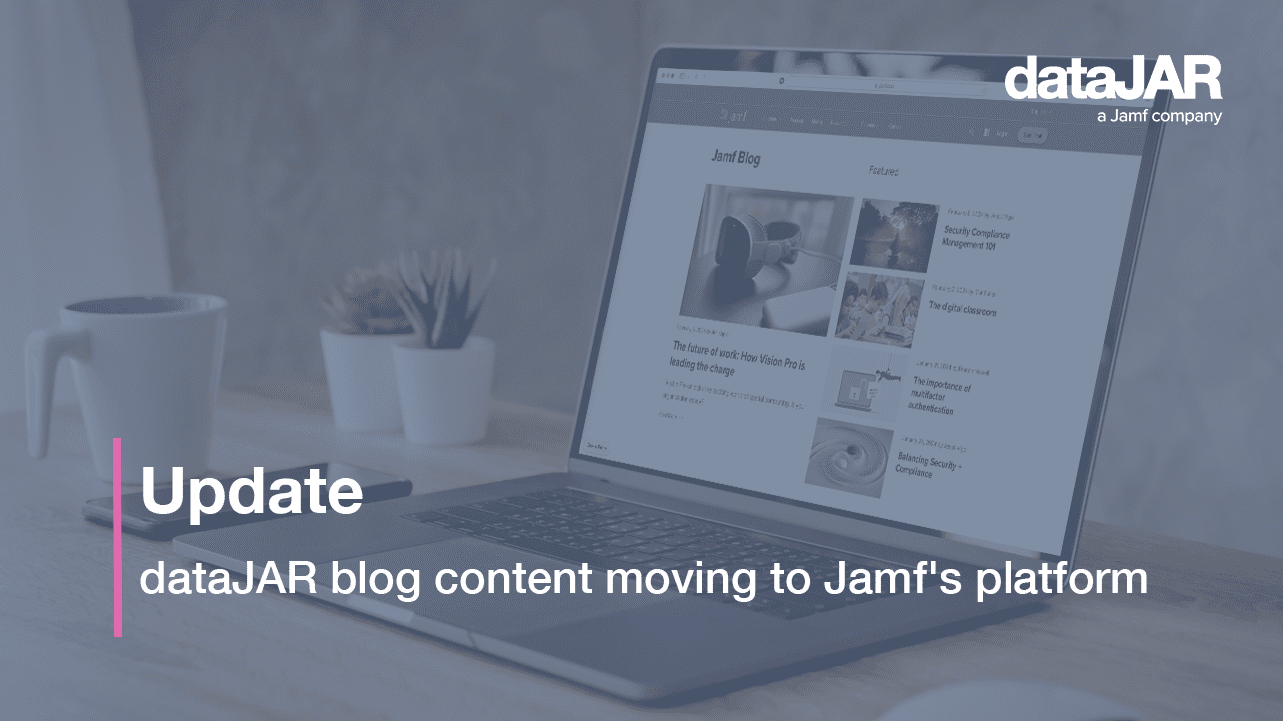Getting ready for iOS 10 and macOS Sierra
Following the slew of announcements at Apple’s media event last week, we thought we’d share some important information with you. This is to ensure that you’re not caught out when these shiny new operating systems are launched!
Firstly, let’s make you aware, if you didn’t already know, that iOS 10 will be available from the 13th September, while macOS Sierra (yes, it’s no longer called Mac OS X!) from the 20th September. If you’re an Apple Developer like us, you’ll be lucky enough to get your hands on the updates now to test in your environment.

What’s new in iOS 10
We’re really impressed with iOS 10, there are lots of new features and enhancements:
- Raise to wake – just pick up your device and it will wake up
- Notifications – the lock screen and notifications have been completely redesigned, plus a ‘clear all notifications option’ has been added
- Water detection – if you’re not lucky enough to get your hands on a waterproof iPhone 7, iOS 10 will notify you if your device detects potential water damage
- Control Centre – the new look is far easier on the eye
- Siri – gets better and better with every iOS release!
- Messages – add cool effects and rich graphics to your iMessages
- Photos – tons of new features have been added to help organise your photos
- Maps – further integration and optimisation with search engines make this release of Apple Maps fantastic
Technical changes coming in iOS 10
Additionally, the following technical changes are coming to iOS 10, which you’ll need to be prepared for:
- VPN Protocol – iOS 10 won’t support PPTP connections for VPN profiles. Further information can be found here: https://support.apple.com/kb/HT206844
- Cryptographic Protocol – The SSLv3 cryptographic protocol and the RC4 symmetric cipher suite will be deprecated in iOS 10. After you update, by default, TLS clients or servers implemented with SecureTransport APIs won’t have RC4 cipher suites enabled. They won’t also be able to connect when RC4 is the only cipher suite available (if you own a service or app that requires RC4, you should upgrade it to turn on cipher suites which are more secure).
iOS 10 compatibility
The following devices are compatible with iOS 10, if your device is not listed, you’ll need to upgrade your device:
- iPhone 6s
- iPhone 6s Plus
- iPhone 6
- iPhone 6 Plus
- iPhone SE
- iPhone 5s
- iPhone 5c
- iPhone 5
- iPad Pro 12.9 inch model
- iPad Pro 9.7 inch model
- iPad Air 2
- iPad Air
- iPad 4th generation
- iPad Mini 4
- iPad Mini 3
- iPad Mini 2
- iPod Touch 6th generation

What’s new in macOS Sierra
We’ve been testing macOS Sierra for a while and like iOS 10 this is a much welcomed upgrade with some fantastic features cosmetically and also deep within the OS:
- Siri – implemented beautifully, simply ask your Mac to send messages or check the weather without stopping what you’re doing
- Copy and Paste – sounds pretty basic? You’re wrong, this enhancement enables you to copy content from any of your devices and paste to another, powerful stuff!
- Auto Unlock with Apple Watch – if you have an Apple Watch and an Apple ID with 2-Factor Authentication enabled, you won’t have to worry about remembering your password. Simply be in close proximity of your Mac and it will unlock
- iCloud Drive – files on your Desktop or Documents folder can now be stored in iCloud and are accessible to all of your other devices
- Apple Pay – online transactions can now be made even more secure by using Apple Pay on your Mac, making payments faster and safer
- Storage Optimisation – macOS Sierra will actively scan files and store rarely used files in iCloud and help you find and remove files you no longer use
- Photos – like iOS 10, the Photos app has had many excellent additions
- Messages – as with iOS 10 the Messages app contains many great new interactive features
- Tabs – document tabs are now available throughout
- Picture in Picture – you can view video over your desktop or full screen
Technical changes coming in macOS Sierra
Additionally, the following technical changes are coming to macOS Sierra which you’ll need to be aware of:
- Portable home directories – you won’t be able to create portable home directories. Mobile home directories, that have networks accounts and are cached locally, can still be created. However home folders will no longer sync with network home directories
- VPN Protocol – iOS 10 and macOS Sierra won’t support PPTP connections for VPN profiles. Further information can be found here: https://support.apple.com/kb/HT206844
- Kernel Core Dumps – To gather kernel core dumps, you must use the nvram command to properly set boot-args NVRAM variable, please see https://developer.apple.com/library/mac/technotes/tn2004/tn2118.html With macOS Sierra you must be booted to the recovery partition to run this command
- Cryptographic Protocol – The SSLv3 cryptographic protocol and the RC4 symmetric cipher suite will be deprecated in macOS Sierra. After you update, by default, TLS clients or servers implemented with SecureTransport APIs won’t have RC4 cipher suites enabled. They won’t also be able to connect when RC4 is the only cipher suite available (if you own a service or app which requires RC4, you should upgrade it to turn on cipher suites which are more secure)
- Directory Integration – with macOS Sierra, you might see warnings when using RC4 encryption for Kerberos. If you see these warnings, change your configuration in Active Directory to support macOS clients in the future. Please see https://support.apple.com/kb/HT206878 for further information
- Xsan 5 – fsm upgrades your volume’s metadata to a newer format. Please see https://support.apple.com/kb/HT206807 for further information
- Java 6 – Java 6 is not supported on macOS Sierra. So if you have any applications that might require Java 6 (Adobe CS6 for example), you will need to update them before moving to macOS Sierra
macOS Sierra compatibility
The following devices are compatible with macOS Sierra, if your device is not listed, you’ll need to upgrade your device:
- MacBook (late 2009 or later)
- iMac (late 2009 or later)
- MacBook Air (2010 or later)
- MacBook Pro (2010 or later)
- Mac Mini (2010 or later)
- Mac Pro (2010 or later)
IMPORTANT: Apple Deployment Programmes
If you are enrolled into Apple’s Deployment Programmes (Device Enrolment Programme) you’ll need to acknowledge Apple’s new license agreements which will be released on September 13th. To do this you’ll need to go tohttps://deploy.apple.com and accept the following agreements to continue to use the programmes:
- iOS 10 Software License Agreement
- Software License Agreement for macOS Sierra
For further information regarding this, please visit: https://support.apple.com/en-gb/HT203063
How to upgrade?
If you are a datajar.mobi customer then please contact your Sales/Technical Account Manager or a member of the Support Team who can advise you of your upgrade process.




